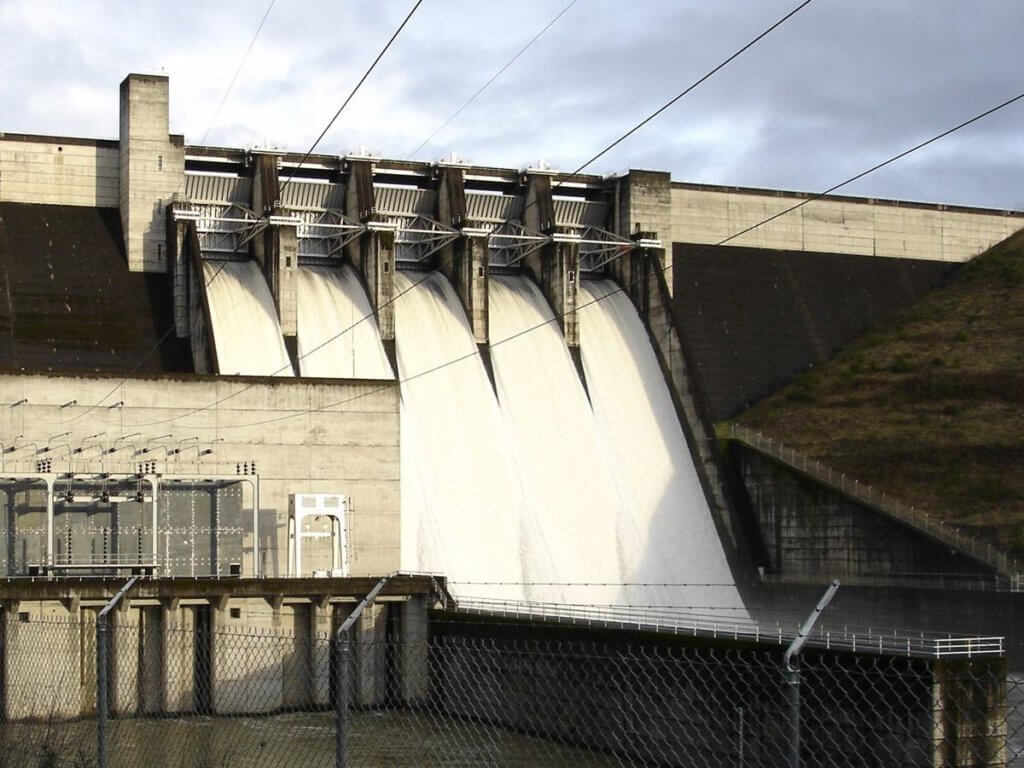By Mateusz Perkowski | Jan. 8, 2021 | Capital Press
Farmers, under new federal law, have gained access to about 328,000 acre-feet of water stored behind 13 dams in Oregon’s Willamette Valley.
However, they’d be wise to wait until further regulatory processes are finished before installing irrigation structures to take advantage of the newly available water, experts say.
“We’re not going to encourage people to invest money on-the-ground until we have a better sense of what we’re talking about long-term here,” said Mary Anne Cooper, vice president of public policy with the Oregon Farm Bureau.
Congress approved a plan to split nearly 1.6 million acre-feet of water in Willamette Valley reservoirs among irrigators, cities and in-stream flows in a broader, $1.4 trillion spending bill that became law in the final days of 2020.
The legislation contains several caveats that are subject to different interpretations among the U.S. Army Corps of Engineers, which developed the plan, and various groups that will compete for the water.
Irrigators are allocated 327,650 acre-feet under the plan, while municipal and industrial users get 160,000 acre-feet. More than 1.1 million acre-feet will be dedicated to fish and wildlife purposes, but the exact amounts are subject to revision based on regulatory findings.
The water’s division between agricultural, municipal and environmental purposes has been undefined for more than two decades while the Corps navigated legal obstacles, so the Congressional affirmation of its reallocation plan is a major step forward.
Even so, the specifics of how the U.S. Army Corps of Engineers will administer the water — especially when reservoir levels are lower than normal — remains ambiguous and will require clarification, Cooper said.
“It’s one of the most complex water management issues we’ve seen statewide,” she said. “You’d need a crystal ball to accurately predict the future.”
While the recent federal legislation authorized the Corps’ reallocation plan, it also requires the agency to abide by “reasonable and prudent alternatives” developed by the National Marine Fisheries Service to protect threatened salmon and steelhead.
The planned water distribution is also contingent on a future “biological opinion” and “environmental impact statement”related to Willamette basin dam operations, which are being conducted under the Endangered Species Act (ESA) and National Environmental Policy Act (NEPA), respectively.
Building irrigation diversions and conveyances is expensive, so such projects should be undertaken once the regulatory landscape becomes more well-established, said Gail Greenman, the Farm Bureau’s national affairs director.
“Producers need to have the belief that it will not be undone,” Greenman said.
WaterWatch of Oregon, an environmental group that filed a lawsuit against the reallocation, no longer opposes the plan based on language included in the federal legislation, said Brian Posewitz, the nonprofit’s staff attorney.
Because the Corps must follow the “reasonable and prudent alternatives,” the agency can’t reduce water proportionally among irrigators, cities and fish during low water years — a key element of the plan that Waterwatch opposed, he said. Fish needs must come first in drought years, according to this interpretation of the law.
“You can’t force the fish to share the pain, you have to make them a higher priority,” Posewitz said.
The legislation also contains a “compromise solution” allowing water allocations to be changed by up to 10 percent of the total 1.6 million acre feet available, contrary to the Corps’ intention to make those amounts immutable, he said.
In other words, another 160,000 acre-feet of water could be dedicated to in-stream flows, Posewitz said.
The Oregon Farm Bureau believes the possibility of a 10 percent adjustment also presents an opportunity for more water to be available to irrigators, Greenman said.
Despite WaterWatch’s interpretation, it’s not yet clear the “reasonable and prudent alternatives” will prioritize fish over other water users in the plan, added Cooper.
“There are too many complexities to be able to get a certain answer to that question,” she said.
This article originally appeared in the Capital Press on Jan. 8, 2021.

